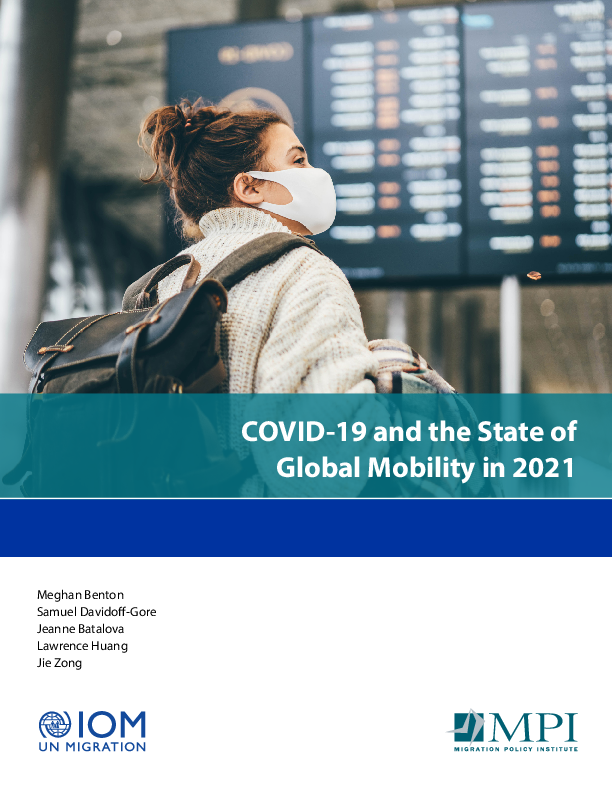-
Countries
-
Data and Analysis
-
Special Focus
-
Crisis Responses
COVID-19 and the State of Global Mobility in 2021

Contact
dtmcovid19@iom.int
Language
English
Location
Global
Period Covered
Mar 01 2020
Dec 31 2021
Activity
- Other
Since the beginning of the COVID-19 pandemic, countries, territories and areas (C/T/As) have sought to prevent the virus’ spread through a broad array of travel measures. These have included both travel restrictions, such as bans on arrivals or visa cancellations for travellers from particular jurisdictions, and health requirements, such as quarantine requirements, testing and – most recently, in some C/T/As – vaccination and recovery certificates. These measures have had different goals, from seeking to prevent the virus arriving at all (containment), to postponing its arrival (delay), to minimizing the number of infections (mitigation). Initially, travel restrictions, alongside widespread closures of airports and other points of entry, were designed to halt all forms of human movement in their tracks. But governments have increasingly sought to safely restart cross-border mobility of all types and, thus, many of the newest rules seek to safely expand the groups who are able to travel or replace blunt entry bans with measures to minimize the risk of the virus spreading.
The International Organization for Migration (IOM) has been tracking travel measures and border closures since March 2020. This study is the result of collaboration between IOM and the Migration Policy Institute (MPI) to analyse the implications of these data and, in particular, to track on an annual basis the impact of COVID-19 on cross-border mobility.
The sheer volume of travel measures in play – more than 100,000 as of the end of 2021 – continues to chill cross-border mobility. It is striking that this picture remained largely unchanged in the face of huge shifts in the epidemiological situation over the course of 2021, which saw peaks and troughs in the number of confirmed COVID-19 cases globally and within C/T/As, shaped by outbreaks of new variants of the virus as well as rising vaccination rates.
This report outlines trends in cross-border mobility regimes at the global and regional levels in 2021, comparing these to the benchmark set in 2020. Next, it looks at the impacts and costs of these travel measures on migrants and migration around the globe. Then, it examines the policy questions C/T/As face in deciding how to adapt their mobility systems as conditions continue to change. Finally, the report considers the role of international coordination in the design and implementation of travel measures and the use of digital health credentials. The report concludes with recommendations and key questions the world will need to grapple with in 2022.
